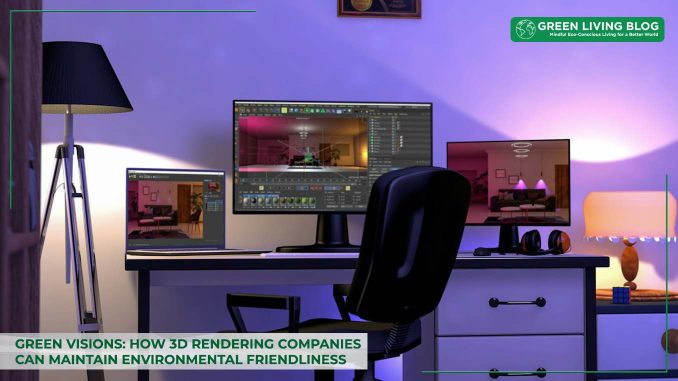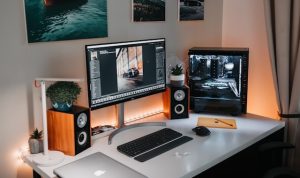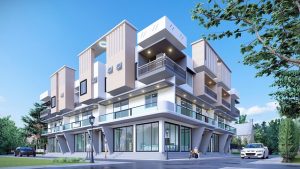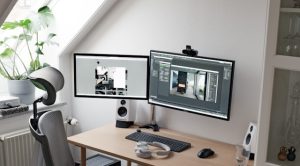
Top architectural visualization studios increasingly focus on sustainability, aiming to minimize their ecological footprint while maintaining high-quality outputs.
This article explores how the best 3D rendering companies can adopt environmentally friendly practices. We’ll cover strategies from energy-efficient technologies to sustainable material usage, providing a comprehensive guide for a greener approach in the 3D rendering industry.
Among the best 3D architectural visualization companies, eco-friendly practices are becoming a standard to reduce environmental impact.
Energy Efficiency in 3D Rendering

Optimizing Hardware and Software: To start, let’s talk about hardware and software. Using energy-efficient hardware can drastically cut down on power consumption. High-performance, low-energy computers are a game-changer in this field. On the software side, optimized algorithms can significantly reduce the time and energy required for rendering processes. These improvements lower energy bills and contribute to a smaller carbon footprint.
Renewable Energy Sources: Another effective strategy is integrating renewable energy sources. Imagine powering your rendering studio with solar or wind energy. It sounds futuristic, but it’s entirely feasible. On-site renewable installations or purchasing renewable energy credits can drastically lower environmental impact. This shift promotes sustainability and can lead to long-term cost savings.
Sustainable Material Usage
Selecting Eco-Friendly Materials: Now, let’s delve into materials. Incorporating sustainable materials into visualizations is crucial. Using recycled or locally sourced materials, such as bamboo, recycled rubber, and adobe, can significantly reduce environmental impact. These materials are eco-friendly and add unique aesthetic value to designs.
Demonstrating Material Sustainability: 3D renders play a vital role in demonstrating the use of sustainable materials. They help clients and stakeholders visualize the environmental benefits of their choices. By showcasing how these materials look and function within a project, renders can make sustainable choices more appealing and understandable.
Reducing Waste in the Rendering Process
Efficient Resource Management: Waste reduction is another critical aspect. Efficient resource management involves precise calculation of materials needed, ensuring nothing goes to waste. This approach minimizes the environmental footprint and saves costs by avoiding the overproduction of physical models.
Digital Prototyping: Digital prototyping is a powerful tool for reducing material waste. By using digital models, companies can avoid unnecessary physical resource use during the design phase. This method is not only eco-friendly but also more cost-effective and efficient.
Incorporating Green Building Practices

Sustainable Site Design: Sustainable site design is a cornerstone of green building practices. 3D rendering can visualize elements like rain gardens, permeable surfaces, and integration of natural topography. These features minimize environmental impact and enhance building performance.
Energy-Efficient Building Designs: 3D rendering can also visualize and simulate energy-efficient building designs. By incorporating features such as solar panels, wind turbines, and passive heating and cooling systems, renders can show how buildings can achieve high levels of energy efficiency.
Promoting Renewable Energy Systems
Visualization of Renewable Energy Systems: Visualizing renewable energy systems through 3D rendering is crucial for planning and efficiency. Proper placement of solar panels and wind turbines can be optimized for maximum efficiency, enhancing the project’s sustainability and ensuring functional and aesthetic integration.
Simulation of Energy Performance: Using 3D rendering to simulate energy performance helps predict and optimize energy consumption. This foresight is invaluable for making buildings more sustainable. By simulating different scenarios, designers can choose the most efficient project options.
Water Conservation Techniques
Sustainable Plumbing Systems: Water conservation is another vital aspect of green building. 3D rendering can visualize sustainable plumbing systems, such as rainwater harvesting and greywater systems. These systems are crucial for efficient water use in building designs, promoting sustainability, and reducing water wastage.
Water-Efficient Landscaping: It can also be planned and visualized using 3D rendering. By showcasing designs that minimize water use while maintaining aesthetic appeal, 3D renders help promote sustainable landscaping practices.
Case Studies of Sustainable 3D Rendering Projects

Residential Projects: Let’s look at some real-world applications. Residential projects have successfully used 3D rendering to integrate sustainable features. These projects often highlight significant environmental benefits, demonstrating the practical application of green design principles.
Commercial Projects: Commercial buildings have also benefitted from 3D rendering by incorporating green technologies and materials. These case studies show how businesses can substantially reduce environmental impact while maintaining functional and aesthetic integrity.
Conclusion
In conclusion, integrating energy efficiency, sustainable materials, waste reduction, and renewable energy systems into 3D rendering workflows is essential for maintaining environmental friendliness. The best architectural rendering companies are already adopting these practices, leading toward a more sustainable future. By implementing these strategies, top 3D rendering companies can play a crucial role in promoting environmental sustainability while continuing to deliver high-quality visualizations. This approach benefits the environment and meets the growing demand for eco-friendly solutions in the market.
Author:
Aimee S. Marshall
Aimee is a seasoned digital artist and design enthusiast who is passionate about creating stunning visuals. With over a decade of experience in 3D rendering and design, she has worked on projects spanning various industries, from architecture and interior design to product visualization and advertising. Aimee shares her expertise and insights through writing, mentoring, and speaking engagements, aiming to inspire others in the dynamic world of 3D rendering and design.
![]()
Author Profile

- Always on the hunt for the latest green living news, tips and stories, proudly sharing them with readers all around the world to make this planet a better place.
Latest entries
 Green Business NewsMarch 12, 2025WindsorPatania Architects’ game-changing Virtual Reality Education Project XR Lab takes Top Award
Green Business NewsMarch 12, 2025WindsorPatania Architects’ game-changing Virtual Reality Education Project XR Lab takes Top Award DictionaryFebruary 11, 2025What is the Meaning of the Term “Green Living”
DictionaryFebruary 11, 2025What is the Meaning of the Term “Green Living” Green News ReleasesJanuary 30, 2025Stand Up Pouches: What to Know about Flexible Packaging for Sustainable Brands
Green News ReleasesJanuary 30, 2025Stand Up Pouches: What to Know about Flexible Packaging for Sustainable Brands DictionaryJanuary 11, 2025What is the Meaning of the Term “Guest Post”
DictionaryJanuary 11, 2025What is the Meaning of the Term “Guest Post”





Leave a Reply
You must be logged in to post a comment.